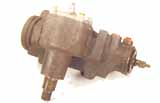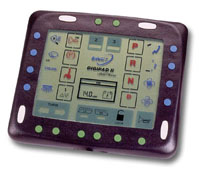Unfortunately, snow isn’t the only thing to watch out for while behind the wheel of a wheelchair accessible vehicle during the colder months. There’s also slush, black ice and blizzards. Fortunately, with the correct driving techniques, each can be handled stress free and safely.
Be Prepared
First and foremost, if you’ll be driving in the snow anytime soon, be prepared. This means having you car winterized before it’s needed. Depending on your location this can mean installing both snow tires and winter windshield wipers. Be sure to contact your local NMEDA dealer to find out if there are any special precautions you should take to get your handicap van ready for the snow. Additionally, have your battery, defroster, and antifreeze checked and stock your vehicle with emergency supplies like blankets, flashlights, food, water, shovel, sand, and first aid. Also, it’s a good idea to always have at least a half tank of gas. This gives the car some extra weight to help prevent skidding, but it’s also is safer in the event of getting lost or stranded. Finally, be sure to plan for extra time to get to your destination. You should never feel rushed or feel as if you have an excuse to speed.
Driving in Snow
First things first, slow down! Ten to fifteen miles per hour is a good speed of thumb when driving in snow. Always give yourself more stopping room because even in mild conditions, a little bit of skidding can be common. Also, try not to use cruise control. Your reaction time will not only be delayed, but if your vehicle begins to slide it will continue to accelerate. Make turns gently and avoid changing lanes unless necessary. If you must switch lanes, turn your wheel gradually to avoid fish tailing.
In the event you do slide off the road, don’t immediately try to gun it out or else you may dig yourself in. First, try a gentle acceleration. If this doesn’t get you out, stop and turn your wheel side to side to push snow away from the tires. Your best bet is to then use a shovel to clear snow and then spread sand for traction, however if you have limited mobility or use a wheelchair (meaning maneuvering in the snow might be difficult), it might be best to call a family member or emergency road service to help you get back on the road.
Driving on Ice
Iced over roads are one of the most dangerous aspects of driving during the winter. Black ice is hard to spot because it’s almost invisible, but if you begin to slide over it, take your foot off both the brake and the accelerator. Let your car slide and try to keep the car straight until you get traction back. If you lose control and start going off the road, try to guide your car toward an area with minimal damage possibilities. In general, look out for shady spots where the sun can’t melt the ground because black ice is more likely found here.
Driving in a Blizzard
If a blizzard hits while you’re out on the road, turn on your lights so that other drivers can easily see you, avoid changing lanes and be sure to pull over if you feel unsafe. If you do pull over, just make sure to get away from traffic and turn on your hazard lights.
If possible, avoid driving in the snow completely. If you do need to go out, many counties and towns list what roads have been plowed and salted online, so check to see if you can plan a safer route.
Hopefully with these tips you’ll now have a better understanding of how to handle your vehicle on winter roads. In general, if there’s any snow, ice, or slush on the road, driving slower and giving enough stopping room will eliminate many of the problems you might face. Add some common sense and good judgment, and you’ll be well on your way to mastering inclement weather.


